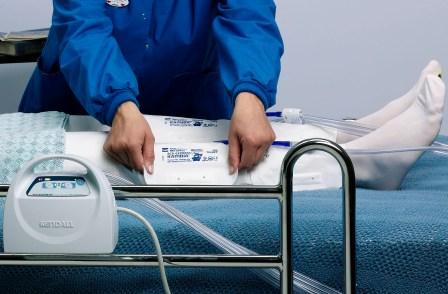Stroke: A Leading Case of Death and Disability

Stroke is a leading cause of death and disability in the U.S., with 800,000 cases occurring each year.
“Evidence shows that the health of approximately one in three stroke patients will deteriorate within 24 hours after suffering a stroke. This points to a critical need for intensive continuous monitoring of blood pressure, temperature, oxygenation and blood glucose of all stroke patients to rapidly assess and protect their health and safety,” explains Deborah V. Summers (Stroke Program Coordinator, Saint Luke’s Health System’s Marion Bloch Neuroscience Institute). “One of the deteriorating conditions that may develop within 24 hours of a stroke incident and which may be preventable is PE [pulmonary embolism], which may be fatal. If VTE [venous thromboembolism] risk factor and prophylactic measures are instituted early on, fatal PE may be prevented.”
VTE is a common and potentially avoidable cause of death and illness in hospitalized patients. With about 300,000 total cases per year, VTE is particularly common in stroke patients. Approximately 20 percent of hospitalized immobile stroke patients will develop a deep vein thrombosis, and 10 percent a pulmonary embolism.
Stroke VTE Safety Recommendations Prevent Blood Clots In Stroke Patients
The Stroke VTE Safety Recommendations may help reduce death and disability among stroke victims due to VTE. Developed by a group of leading neurological health and patient safety experts brought together by the Physician-Patient Alliance for Health & Safety, the Stroke VTE Safety Recommendations incorporate the latest research.
The Stroke VTE Safety Recommendations provide four concise steps that:
- Assess all admitted patients with a stroke or rule out stroke diagnosis for VTE risk with an easy to use checklist.
- Provide the recommended prophylaxis regimen, which includes the use of mechanical prophylaxis and anticoagulant therapy.
- Reassesses the patient every 24 hours, prior to any surgical or procedural intervention or change in the patient’s condition.
- Ensure that the patient is provided appropriate VTE instructions and information upon hospital discharge or transition to rehabilitation.
The Stroke VTE Safety Recommendations can be viewed by clicking here.
